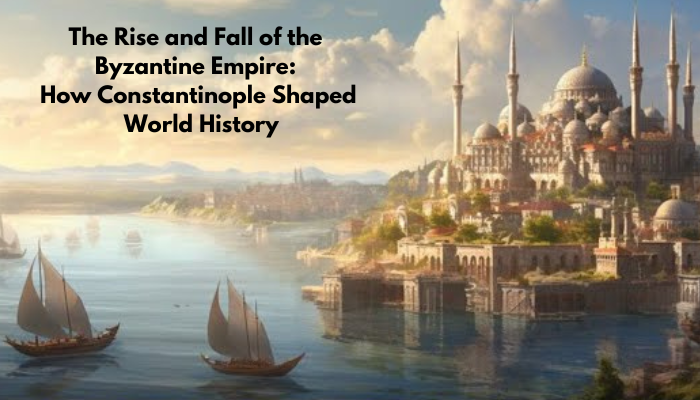Introduction
The Byzantine Empire is often regarded as one of the most fascinating periods in history. Spanning over a thousand years, from the fall of the Western Roman Empire in 476 AD to the fall of Constantinople in 1453, this empire was a bridge between the ancient and modern worlds.

So, what made the Byzantine Empire so unique? It was a melting pot of cultures, blending Greek, Roman, and Middle Eastern influences. The Byzantines made significant contributions to art, architecture, and governance, shaping Europe and the Middle East in profound ways.
In this article, we will explore the empire’s origins, achievements, and lasting legacy, uncovering how it has influenced our world today.
Origins of the Byzantine Empire
The Byzantine Empire originated from the eastern part of the Roman Empire. After the fall of the Western Roman Empire in 476 AD, the eastern provinces continued to thrive, with Constantinople (formerly Byzantium) as its capital.
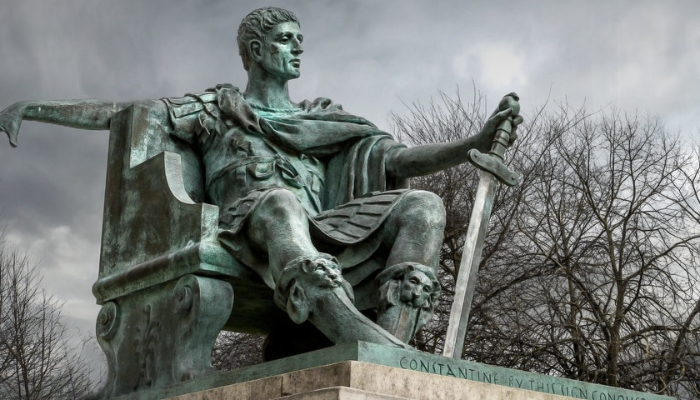
Founded by Emperor Constantine the Great in 330 AD, Constantinople became a vital hub for trade and culture. The city’s strategic location between Europe and Asia allowed it to flourish economically and politically.
The empire was deeply influenced by its Roman roots, adopting Roman laws and governance. However, it also embraced Greek culture, particularly in language and philosophy. As a result, the Byzantine Empire was characterized by a unique blend of traditions that set it apart from its Roman predecessors. This rich cultural foundation would play a crucial role in the empire’s longevity and resilience.
Cultural Achievements of the Byzantine Empire
The Byzantine Empire is renowned for its remarkable cultural achievements that shaped art, architecture, and education. One of its most significant contributions was the construction of Hagia Sophia,

a stunning cathedral that exemplifies Byzantine architecture with its massive dome and intricate mosaics. This masterpiece, built under Emperor Justinian I in the 6th century, became a symbol of Byzantine ingenuity and spiritual devotion.
In addition to architecture, Byzantine art flourished with its distinctive style, characterized by vibrant mosaics and iconography. Artists created religious icons that conveyed deep spiritual meaning, influencing both Eastern Orthodox and Western Christian art.

Furthermore, the empire was a center of scholarship, preserving ancient Greek and Roman texts. Byzantine scholars played a vital role in the Renaissance by transmitting classical knowledge to the West.
Political Structure and Governance
The political structure of the Byzantine Empire was a complex and sophisticated system that evolved over its long history. At its core was the Emperor, who held absolute power and was seen as the representative of God on Earth. The Emperor was not only a political leader but also a spiritual one, often influencing church decisions and policies.
Beneath the Emperor were various administrative officials who helped manage the empire. The Bureaucracy was extensive, with officials responsible for different regions and functions, ensuring the efficient governance of the vast empire. The Senate, while less powerful than in ancient Rome, still played a role in advising the Emperor and participating in governance.

The empire’s strategic location between Europe and Asia enabled it to control trade routes and maintain a strong military presence. The Byzantine military was well-organized, employing innovative tactics and technologies, such as Greek fire, a devastating incendiary weapon. This political structure allowed the Byzantine Empire to endure for over a thousand years, adapting to challenges while maintaining its identity.
Economy and Trade
The economy of the Byzantine Empire was one of its strongest features, thriving through trade, agriculture, and innovation. Situated at the crossroads of Europe and Asia, Byzantium benefited immensely from its strategic location. Trade routes connecting the East and West allowed for the exchange of goods, ideas, and cultures, enriching the empire economically and socially.
Agriculture was the backbone of the Byzantine economy. The fertile lands of the empire produced a variety of crops, including wheat, barley, and olives. This agricultural wealth supported the population and provided resources for trade. The Byzantine government also implemented land reforms that improved agricultural productivity, ensuring a stable food supply.

In addition to agriculture, the Byzantine Empire was renowned for its craftsmanship and manufacturing. The production of silk was particularly significant; the empire became a major silk producer after monks smuggled silkworms from China. This lucrative industry not only boosted the economy but also allowed Byzantium to maintain its wealth and influence.
Overall, the Byzantine economy was diverse and resilient, playing a vital role in the empire’s longevity and prosperity.
Culture and Religion
The culture and religion of the Byzantine Empire were deeply intertwined, shaping its identity and influencing the surrounding regions. At the heart of Byzantine culture was Christianity, which became the state religion in the early 4th century under Emperor Constantine.

The church not only provided spiritual guidance but also played a crucial role in political affairs, as emperors were seen as God’s representatives on Earth.
Byzantine art and architecture flourished, with mosaics and iconography reflecting religious themes. Stunning churches, such as the Hagia Sophia, showcased intricate designs and became symbols of the empire’s glory. These artworks were not just decorations; they conveyed religious messages and taught biblical stories to the largely illiterate population.

Education was highly valued in Byzantine society. Schools taught not only religious studies but also literature, philosophy, and science. Scholars preserved and copied ancient texts, ensuring that the knowledge of Greece and Rome would not be lost. This commitment to education fostered a culture of learning that contributed to the empire’s intellectual legacy.
Military and Defense
The military and defense strategies of the Byzantine Empire were crucial for its survival and expansion. The Byzantine army was known for its highly organized structure, innovative tactics, and effective use of technology. Unlike the legions of ancient Rome, the Byzantine military relied on a mix of professional soldiers and local militias, which allowed for quick mobilization in defense of the empire’s vast borders.
One of the key military innovations was the use of Greek fire, a flammable liquid that could be used in naval warfare and was devastating against enemy ships.
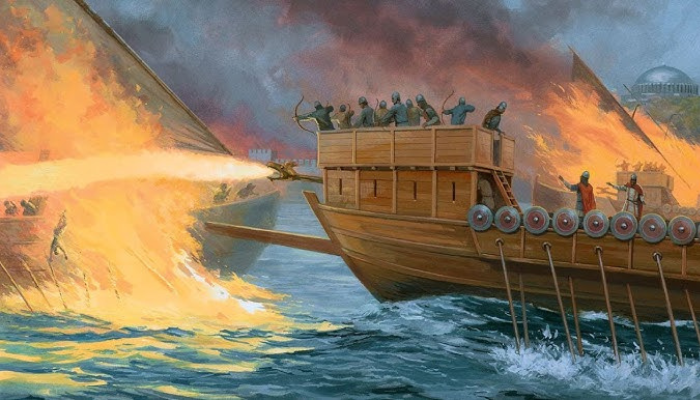
This technology gave the Byzantine navy a significant advantage, especially during the sieges of Constantinople.
The theme system, established in the 7th century, divided the empire into military districts, each governed by a general. This system allowed for more efficient management of resources and troops, enabling rapid response to invasions. The Byzantines faced numerous enemies, including the Persians, Arabs, and later the Seljuk Turks and Ottomans. Despite facing overwhelming odds at times, their strategic defenses, such as the formidable walls of Constantinople, helped to protect the empire for centuries.
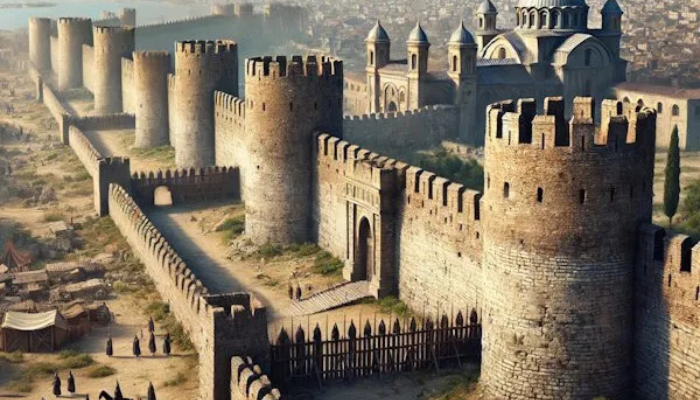
Decline and Fall of the Byzantine Empire
The decline and fall of the Byzantine Empire was a complex process influenced by various internal and external factors. While the empire thrived for centuries, by the late medieval period, it faced significant challenges that led to its eventual collapse.
Internal Struggles: The Byzantine Empire was often plagued by internal divisions, including political intrigue, power struggles, and civil wars.

These conflicts weakened the central authority and diverted resources away from defending the empire’s borders. Additionally, corruption and inefficiency in administration contributed to the decline of public trust and the empire’s ability to respond to external threats.
Economic Decline: Economic instability was another crucial factor. As trade routes shifted and competition increased from emerging powers in the west, such as the Italian city-states, the Byzantine economy weakened.
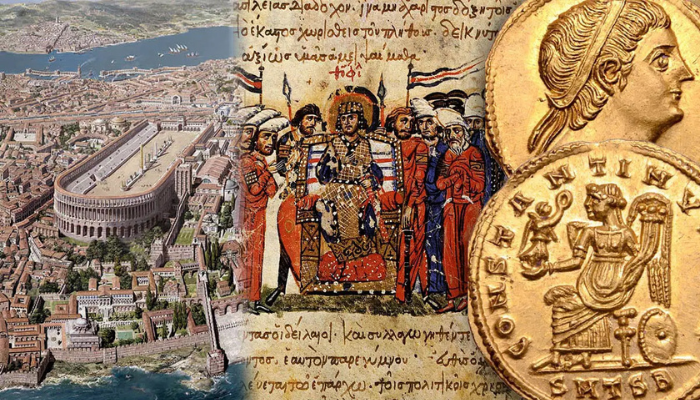
High taxes and inflation further strained the populace, leading to dissatisfaction and unrest. The loss of agricultural lands to invading forces diminished food supplies, exacerbating economic woes.
External Pressures: The empire faced relentless external threats from various groups, including the Ottoman Turks,
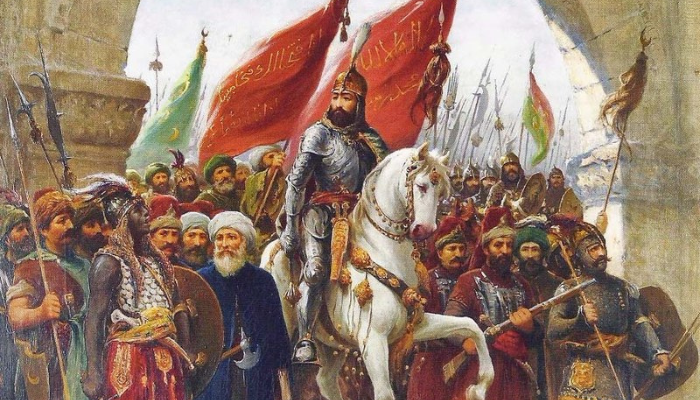
Slavs,
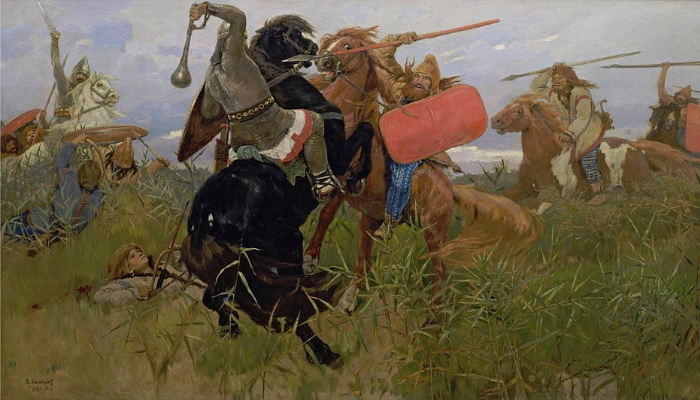
and Crusaders. The Fourth Crusade (1204), which resulted in the sack of Constantinople, significantly weakened the empire.

Although the Byzantines regained control in 1261, they never fully recovered from the damage inflicted during the Crusades.
Fall of Constantinople: The culmination of these factors came to a head in 1453 when Constantinople, the heart of the Byzantine Empire, fell to the Ottoman Turks under Sultan Mehmed II. The city’s formidable defenses, including the Theodosian Walls, were breached, and the fall marked the end of the Byzantine Empire, transitioning power to the Ottomans.
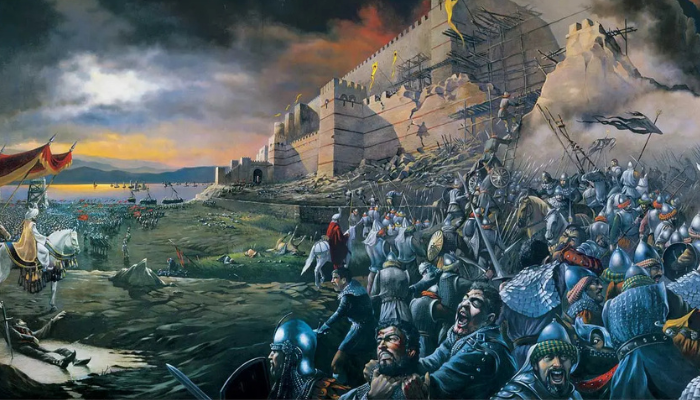
In conclusion, the decline and fall of the Byzantine Empire were the result of a combination of internal discord, economic struggles, and external invasions. The empire’s rich history and cultural contributions, however, continue to be remembered and studied, influencing both Eastern and Western civilizations.
Legacy of the Byzantine Empire
The Byzantine Empire left an indelible mark on history. It served as a bridge between the ancient and modern worlds, preserving the knowledge, culture, and traditions of Greco-Roman civilization while also shaping the future of Europe, the Middle East, and even Russia. Its contributions to art, architecture, law, and religion continue to influence modern society.
The survival of the empire for over a millennium, despite external threats and internal strife, is a testament to its resilience. Its capital, Constantinople, stood as a symbol of strength, wealth, and cultural brilliance for centuries. The eventual fall of the empire to the Ottoman Turks in 1453 marked the end of an era, but its legacy lived on, influencing both the Renaissance and the Eastern Orthodox Church.
In many ways, the Byzantine Empire was a guardian of the past, ensuring that the achievements of ancient civilizations were not lost to time. Its influence on Western civilization is undeniable, and its story continues to captivate historians and the general public alike. Through its political, cultural, and religious achievements, the Byzantine Empire remains one of the most significant empires in world history.
Here is a simple table summarizing key points about the Byzantine Empire:
| Topic | Details |
|---|---|
| Founding | Established in 330 AD by Emperor Constantine I, originally as Byzantium, renamed Constantinople. |
| Peak | Flourished between the 6th and 11th centuries, with strong military, cultural, and economic power. |
| Religion | Center of Eastern Orthodox Christianity, which played a major role in shaping its culture. |
| Capital | Constantinople (modern-day Istanbul), strategically located for trade and defense. |
| Art & Architecture | Known for Hagia Sophia, mosaics, and preserving Greco-Roman art and knowledge. |
| Law & Administration | Created the Justinian Code, which influenced European legal systems. |
| Major Threats | Faced challenges from Persians, Arabs, Crusaders, and finally the Ottoman Turks. |
| Fall of Constantinople | Fell in 1453 to the Ottoman Empire, marking the end of Byzantine rule. |
| Legacy | Preserved Roman culture, influenced the Renaissance, and shaped the Eastern Orthodox Church. |
This table can help readers quickly understand the key elements of the Byzantine Empire.

